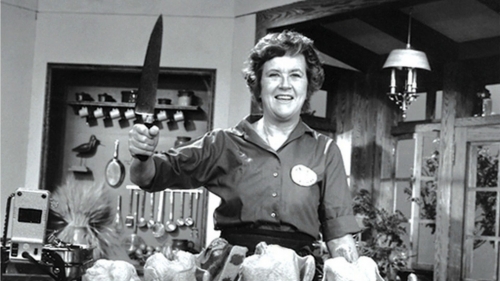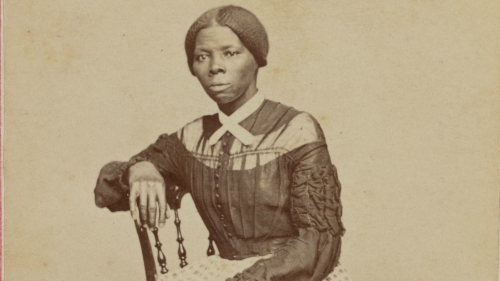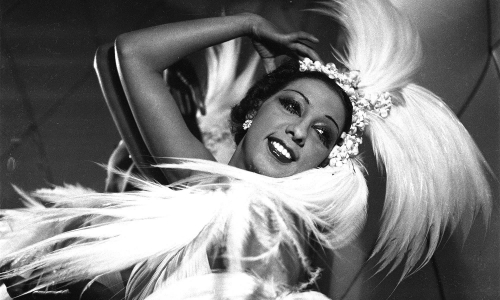Famous Spies
You may know their names—but you probably don’t know that they were also spies. For some of these big-name personalities, spying taught them the skills that made them famous; for others, being famous made them the perfect spies. With that in mind, we are blowing the cover of some of our favorite celebrity spies.
Julia Child

“Bon appétit” became the familiar catchphrase of celebrity chef Julia Child. But decades earlier, before sharing culinary secrets, she worked directly for OSS chief William Donovan as part of America’s wartime spy agency.
Child was one of only a few female OSS employees deployed to Ceylon (Sri Lanka) and China, where she tracked highly classified documents as Chief of the OSS Registry. Though downplaying her role as “only a lowly file clerk,” she received an Emblem of Meritorious Civilian Service.
Fun Fact: In 1943, Child worked with zoologist Captain Harold J. Coolidge to develop a shark repellent for the OSS. However, it was more effective at boosting US Navy morale than driving sharks away.
Explore her story in the Museum's Spying in WWII exhibit.
Moe Berg
Professional baseball player Moe Berg was a third-string catcher…and a first-rate spy for US intelligence, sent behind enemy lines during WWII.
The Second World War (1939-1945) touched people from every walk of life. And people from every walk of life answered the call to serve.
As the Allied and Axis powers fought across Europe, Asia, and Africa, they enlisted the aid of men and women of every background and field, from sports to fashion, from the cabaret stage to the silver screen.
He played for the Chicago White Sox, Cleveland Indians, Boston Red Sox, and Washington Senators. But with a Princeton degree and fluent in at least eight languages, Moe Berg was hardly a typical Major League ballplayer.
The OSS, America’s WWII spy agency, sent Berg on missions to South America and occupied Europe. Meeting with a top Nazi scientist in Switzerland, Berg had orders to shoot him if Germany was close to building an A-bomb.
Harriet Tubman

America’s bloodiest conflict, the Civil War (1861-1865), pitted North against South, state against state, brother against brother.
In that era, few would have expected free blacks or enslaved people to be secretly gathering information or passing messages. And women of any color were seldom suspected. Civil War spies used this to an effective advantage.
Born into slavery, Harriet Tubman escaped bondage in 1849 and became a conductor on the Underground Railroad. Known as Moses, she led more than 300 enslaved people to freedom and “never lost a single passenger.”
A Union spy and military commander, Tubman collected intel behind enemy lines. She also led three US gunboats and 150 African American soldiers on a raid rescuing 750 enslaved people and destroying Confederate estates.
Explore her story in the Museum's "Who Would've Guessed" exhibit.
Josephine Baker

To escape racism at home, African American singer-dancer Josephine Baker left the US for France in the 1930s. She swiftly became the toast of Paris, among France’s most successful and beloved entertainers, and a French citizen.
During WWII, the Deuxième Bureau (Free French military intelligence) recruited Baker. Her fame opened doors to parties where she rubbed shoulders with German, Italian, and Japanese officials…and reported to the French what she heard.
How did she smuggle information to the Allies? On sheet music like this:

Concealed among the musical notes were other notes—in invisible ink—about German military strategies and troop movements.
Baker was awarded the Croix de guerre by the French military honoring Resistance agents who fought with the Allies against the Axis forces.
View Baker's original sheet music in our online artifacts collection or in the Museum's "Who Would've Guessed" exhibit.
Coco Chanel
Simple elegance was the hallmark of French fashion designer Coco Chanel. Her groundbreaking creations helped liberate women from the confines of corsets with clothes that were chic and fashionable, yet comfortable.
Papers declassified after WWII suggest Chanel (codename WESTMINSTER) spied for the Nazis. In 1942, they sent her to Spain with a secret letter to her friend, Prime Minister Winston Churchill, proposing the UK and Germany sign a separate peace.
Harpo Marx
With honks, whistles, and rubber-faced wackiness, Harpo Marx—playing a wild-eyed silent character—tickled funny bones in Vaudeville, on Broadway, and in more than a dozen films. He was among the most beloved of the famed comedians, the Marx Brothers.
After the US established diplomatic relations with the USSR in 1933, Marx visited Moscow for six weeks on a goodwill tour…doubling as a secret courier. He smuggled messages to and from the US embassy under his pants, in a sealed envelope taped to his leg.
George Washington

1776. It was David against Goliath. The 13 American colonies had declared independence from Britain. But how to win that freedom? Britain had the best trained, best equipped, most powerful military on Earth. The Americans had a ragtag band of farmers, frontiersmen, and poorly prepared militias. What finally gave Americans the edge? Espionage.
Both sides spied in the Revolutionary War. But the colonies had a leader who fully understood the power of espionage to outsmart and outmaneuver vastly superior forces: America’s first spymaster…George Washington.
American independence hung in the balance. To defeat Britain, George Washington needed more than muskets. He needed intelligence. In 1777, he hired Nathanial Sackett as the nation’s first spy. A year later, he replaced Sackett with 24-year-old Benjamin Tallmadge. His assignment? Provide vital intel about Britain’s New York City base.

This original letter, written on February 4, 1777 by George Washington, enlisted Mr. Nathaniel Sackett, a New Yorker who had proven himself a valuable spy catcher, as his “intelligence director.” Washington agreed to pay him $50 per month plus $500 to set up a spy network.
“Washington did not beat us militarily. He simply outspied us.” - Major George Beckwith, Head of British Intelligence Operations
Take an up-close look at the George Washington Spy Letter in our online artifacts collection, or view the original letter on display in the Museum's Spying That Shaped History exhibit.
Sterling Hayden
Proclaimed “The Most Beautiful Man in Hollywood,” Sterling Hayden left acting to fight in WWII. The OSS recruited Hayden, an expert seaman to spy under the pseudonym name John Hamilton. He set up secret shipping operations in Italy and parachuted in Croatia. By the end of his service, Hayden had been promoted to captain, and even received the Silver Star. Hayden returned to acting after the war and went on to star in the classic Cold War satire, Dr. Strangelove.
Ian Fleming

Before Ian Fleming wrote his novels about the MI6 agent James Bond, Fleming was a spy himself. He began his military career at the beginning of WWII as a Lieutenant Commander RNVR in the naval intelligence division and was the assistant to the director of naval intelligence.
In the James Bond novels, “M,” head of Britain’s Secret Intelligence Service (MI6), has the daunting task of trying to manage the unmanageable 007. In his 1965 novel, The Man with the Golden Gun, Fleming revealed M’s identity as Vice Admiral Sir Miles Messervy. The character was supposedly based on Rear Admiral John Godfrey, Fleming’s superior in WWII.
“I wish I had James Bond on my staff,” Kennedy reportedly said in the midst of the Cuban Missile Crisis. An avowed fan of Ian Fleming’s novels, Kennedy listed From Russia with Love as one of his 10 favorite books.
Supporting Roles
While these famous faces never went undercover as secret agents, they undertook vital espionage and intelligence work.
Hedy Lamarr
In Hollywood, Austrian-born Hedy Lamarr was promoted as “the most beautiful woman in films.” But during WWII, she and musician George Antheil patented a “Secret Communication System.” It sent messages between a radio transmitter and receiver over multiple frequencies using a random pattern. This helped radio-controlled torpedoes reach their targets by preventing the interception of radio waves. Called frequency hopping, this technology helped form the basis for today’s WiFi, GPS, and Bluetooth communication systems.
Lamarr died in 2000. But in 2014, she and Antheil were inducted into the National Inventors Hall of Fame for their frequency hopping communication system.
"Improving things comes naturally to me." - Hedy Lamarr
John Ford
Film director John Ford joined the naval field photography unit during WWII. That caught the eye of OSS director William Donovan who invited Ford to work for the OSS. Ford would go on to create OSS training films and war documentaries including December 7th and The Battle of Midway.
Ford and his team risked their lives to film actual battle footage; it would be many Americans’ first view of real combat. Wounded by enemy fire, Ford earned a Purple Heart—and the film won an Oscar® for Best Documentary.
“I want every mother in America to see this film,” said President Roosevelt after screening The Battle of Midway. John Ford’s documentary celebrated a key US victory while vividly depicting the sacrifices required.
Marlene Dietrich

German born Marlene Dietrich became a U.S. citizen after defying Hitler’s orders to return to her native Germany. The sultry performer risked her own safety to entertain American troops at the front lines during WWII.
In 1944, the OSS tapped Dietrich to record songs for broadcast to German troops. Her nostalgic reading of German lyrics was intended to lower morale and promote defection. After the war, she received the Medal of Freedom, America’s highest civilian honor.
View Dietrich's 1952 OSS album in our online artifacts collection and the Museum's Propaganda exhibit.

